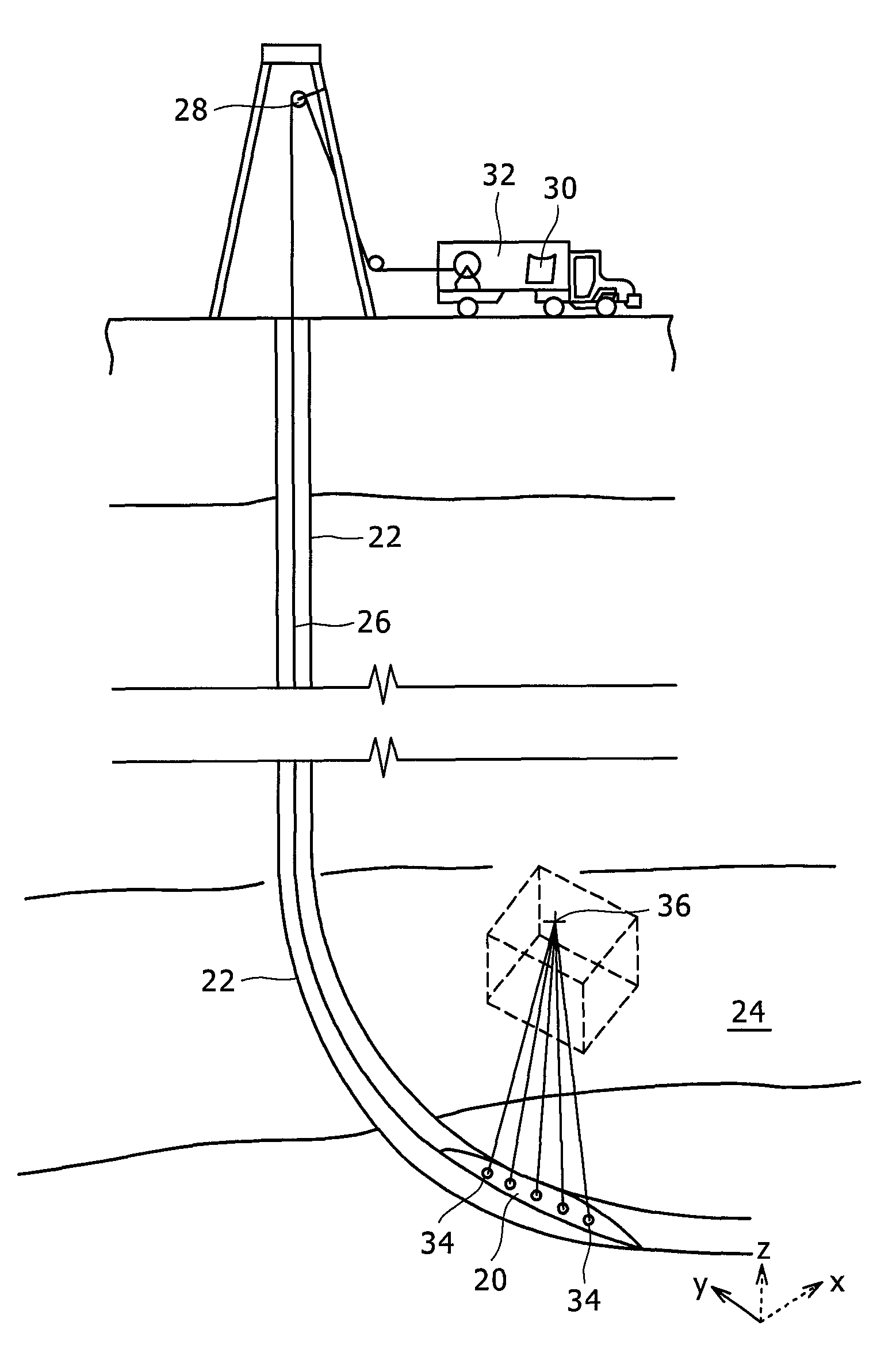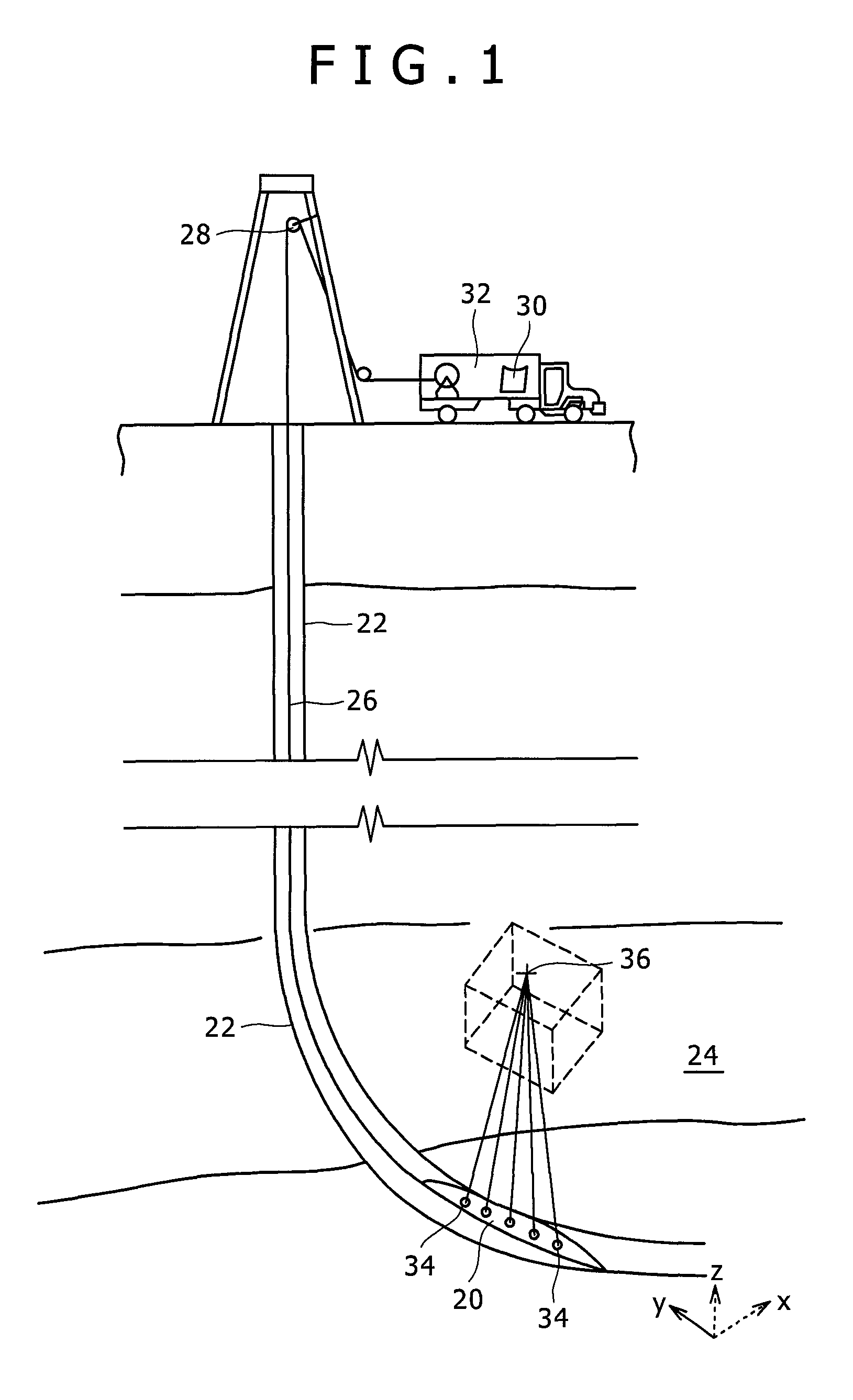Continuous microseismic mapping for real-time 3D event detection and location
a technology of microseismic mapping and event detection, applied in seismology for waterlogging, instruments, measurement devices, etc., can solve the problems of inability to realize real-time operation, unstable and unreliable steps, and inability to accurately locate the even
- Summary
- Abstract
- Description
- Claims
- Application Information
AI Technical Summary
Benefits of technology
Problems solved by technology
Method used
Image
Examples
Embodiment Construction
[0026]So that the above recited features and advantages of the present invention can be understood in detail, a more particular description of the invention, briefly summarized above, may be had by reference to the embodiments thereof that are illustrated in the accompanied drawings and graphs. It is to be noted, however, that the drawings illustrate only typical embodiments of this invention and are therefore not to be considered limiting of its scope, for the invention may admit to other equally effective embodiments.
[0027]FIG. 1 is a schematic illustration of one exemplary embodiment and one exemplary method of deployment, showing a system including a downhole tool that may be used in conjunction with the methods described herein. The system of FIG. 1 depicts a seismic tool 20 disposed in a borehole 22 adjacent a formation of interest 24. The tool 20 may be deployed using conventional logging cable 26, or by another method of deployment that is consistent with the principles desc...
PUM
 Login to View More
Login to View More Abstract
Description
Claims
Application Information
 Login to View More
Login to View More - R&D
- Intellectual Property
- Life Sciences
- Materials
- Tech Scout
- Unparalleled Data Quality
- Higher Quality Content
- 60% Fewer Hallucinations
Browse by: Latest US Patents, China's latest patents, Technical Efficacy Thesaurus, Application Domain, Technology Topic, Popular Technical Reports.
© 2025 PatSnap. All rights reserved.Legal|Privacy policy|Modern Slavery Act Transparency Statement|Sitemap|About US| Contact US: help@patsnap.com



